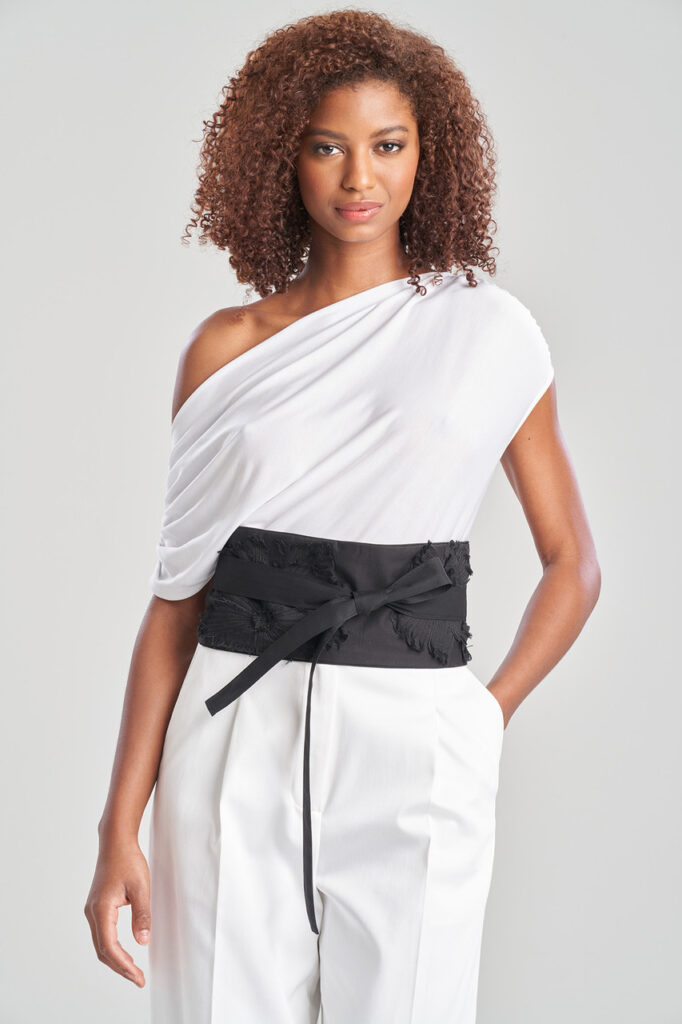Fashion has always been a reflection of culture and history, with trends often drawing inspiration from the past. One such accessory that seamlessly blends tradition and contemporary style is the Obi belt. Originating from Japan, the Obi belt has transcended its cultural roots to become a versatile and timeless fashion statement. In this article, we will explore the history, cultural significance, and modern reinterpretations of the Obi belt, showcasing its enduring allure in the world of fashion.
A Glimpse into History
The Obi belt traces its roots back to Japan, where it has been an integral part of traditional Japanese attire for centuries. The word “Obi” itself refers to a sash or belt, and it plays a crucial role in the traditional kimono ensemble. Kimonos are known for their loose and flowing silhouette, and the Obi bel’t serves to define the waist and add a touch of elegance to the overall look.
The history of the Obi can be traced to the Heian period (794-1185), where it started as a simple cord used to secure the kimono. Over time, as fashion evolved, so did the Obi. During the Edo period (1603-1868), the Obi transformed into a more elaborate and decorative accessory, reflecting the social status and wealth of the wearer.
Cultural Significance
Beyond its aesthetic appeal, the Obi belt holds deep cultural significance in Japanese society. The way in which the Obi is tied conveys a wealth of information about the wearer, including their age, marital status, and the formality of the occasion. There are various styles of tying the Obi, each reserved for specific events and ceremonies.
One of the most iconic Obi styles is the “Fukuro Obi,” a wide and ornate sash often worn with formal kimono. Another notable style is the “Hanhaba Obi,” a half-width Obi suitable for more casual occasions. The intricacies of Obi tying have been passed down through generations, preserving the cultural heritage associated with this timeless accessory.
Evolution in Fashion
While the Obi bel’t has deep roots in tradition, its influence has transcended cultural boundaries, making its mark on the global fashion scene. Designers and fashion enthusiasts alike have embraced the Obi bel’t for its ability to add a touch of drama and sophistication to various outfits.
In contemporary fashion, the Obi belt has been reimagined and adapted to suit diverse styles. It is no longer confined to traditional Japanese attire; instead, it has found its way into modern dresses, blouses, and even outerwear. The wide range of materials, colors, and textures available today allows fashion enthusiasts to experiment with the Obi bel’t in ways that were once unimaginable.
Styling Tips
The versatility of the Obi bel’t lies in its ability to transform a simple outfit into a statement look. Here are some styling tips to make the most of this timeless accessory:
Cinching Dresses and Tunics: Add definition to loose-fitting dresses or tunics by cinching them at the waist with a bold Obi belt. This not only accentuates the waistline but also adds a touch of flair to the overall look.
Layering with Kimonos: Embrace the fusion of East and West by incorporating an Obi belt into your kimono-inspired ensemble. Whether worn over a maxi dress or wide-legged pants, the Obi bel’t adds an element of sophistication.
High-Waisted Elegance: Pair a wide Obi belt with high-waisted trousers or skirts to create an effortlessly chic silhouette. This classic combination enhances the waist and brings attention to the upper body.
Casual Chic: For a more relaxed look, opt for a slim and understated Obi bel’t to add a subtle touch of style to your everyday jeans and blouse ensemble.
Bohemian Vibes: Experiment with a braided or fabric Obi belt to achieve a bohemian-inspired look. Wrap it around a flowy maxi dress or a loose-fitting top for a laid-back yet stylish appearance.
The Future of the Obi Belt
As fashion continues to evolve, the Obi belt shows no signs of fading into obscurity. Its adaptability and timelessness ensure its place as a staple accessory in the wardrobes of fashion enthusiasts worldwide. Designers will likely continue to explore new materials, patterns, and ways of incorporating the Obi belt into their creations, pushing the boundaries of tradition while honoring its cultural roots.
Conclusion
Obi belt stands as a testament to the enduring appeal of cultural influences in fashion. From its humble beginnings in traditional Japanese attire to its current status as a global style icon, the Obi belt has proven that true elegance knows no boundaries. As we continue to draw inspiration from the past, the Obi belt remains a symbol of the beautiful synergy between tradition and modernity in the world of fashion.







